Excerpts from Jim Conrad's
Naturalist Newsletter
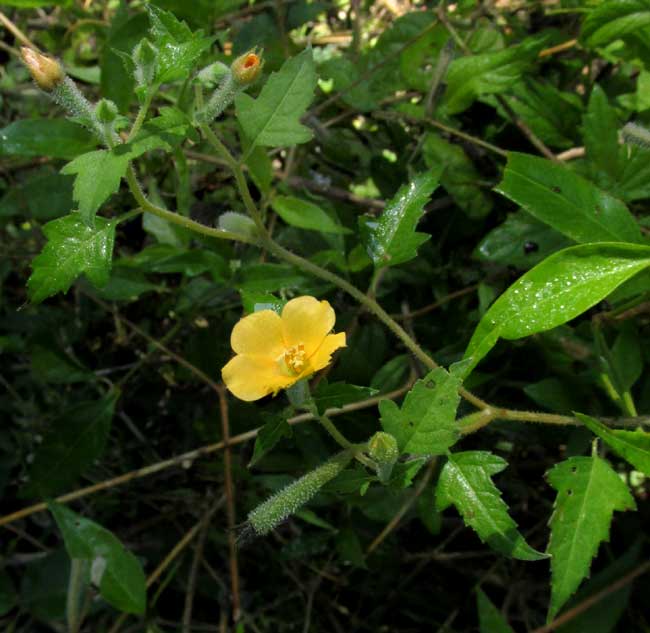
from the November 8, 2015 Newsletter issued from Hacienda Chichen Resort beside Chichén Itzá Ruins, central Yucatán, MÉXICO
TROPICAL STICKLEAF
Some interesting botanical sleuthing got started this week when some slenderly club-shaped, inch-long (3cm) items turned up sticking to hairs on my legs and arms, as shown below:
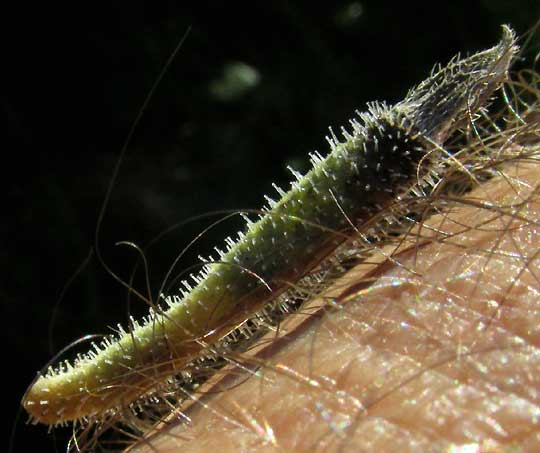
In the picture's top, right corner the narrow, pointed, hairy, fingerlike objects are a flower's dried-up sepals, so the club-shaped thing has to be a maturing ovary or fruit. Moreover, since the sepals arise atop the fruit and not below it, the fruit is one of that minority of species whose flowers produce " inferior" ovaries -- ovaries with sepals, petals and sexual parts at their tops instead of the more common location at the ovaries' bottoms. This was worth noting because it automatically excluded most flowering-plant families from consideration.
When plants producing the sticky ovaries were tracked down I was surprised, because they looked like what's shown at the top of this page.
Earlier when I'd passed those plants I'd not given them a second look because, with such flowers bearing five orangish-yellow petals, it looked like one of the weedy, hard to distinguish mallow species, and I figured I'd already identified all the ones in this area. But mallows, which are members of the Mallow or Hibiscus Family, don't produce inferior ovaries. Looking closer at a flower I confirmed that the sticky fruit could be nothing but a classic inferior ovary with its sepals, petals and sexual parts arising atop the ovary, like a hirsute cucumber, as shown below:
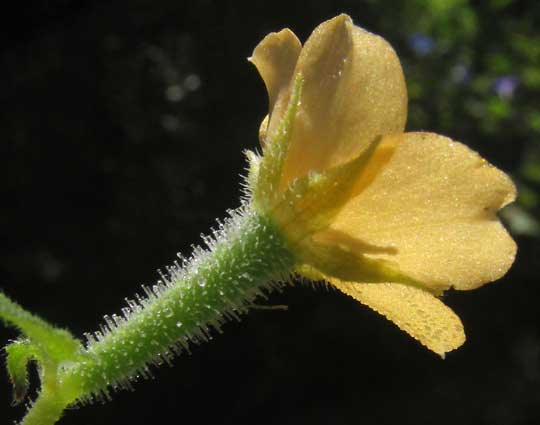
However, a peep into the blossom seemed to insist that the flower really was a mallow, because it looked like its numerous stamens united at their bases, surrounding the female part, as shown below:
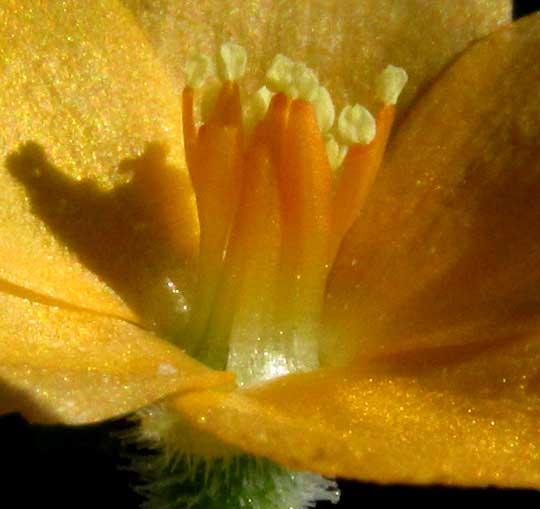
It wasn't as confusing as it sounds because in botany it's a big deal whether a flower has an inferior or superior ovary, so it was clear that, despite outward appearances, our plant had nothing to do with mallows. Looking for more features of the mystery plant I saw that on mature plants the fruits were held at the tips of long, gangling stems -- the better to bring the fruits into contact with hairy mammals -- as shown below:
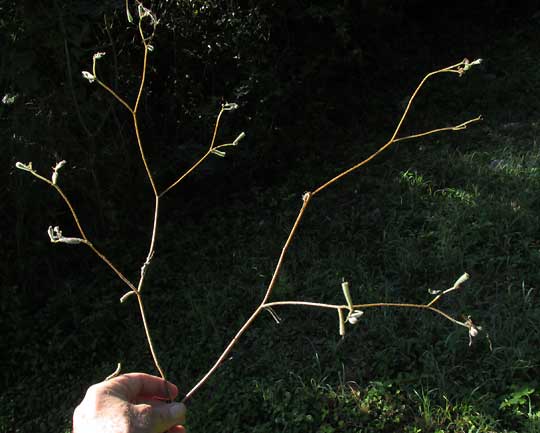
A very close look at the fruits' spines revealed an unusual kind of grappling structure fixed atop each spine, shown below:

Instead of simple hooks, the spines' tips bear four or five backward-pointing points that catch on hair or fiber.
Since only a minority of plant families produce flowers with inferior ovaries it wasn't hard to figure out that our plant belonged to the small, little known, New World Loasa Family, a family of 15-20 genera and 200-260 species, native to the Americas and Africa. It's a family known especially for the peculiar hairs investing its species, and sometimes the hairs are stinging ones. In the Yucatan we host two members of the Loasa Family. We've already looked at the other one, a vine bristling with hooked hairs, Gronovia scandens, profiled at www.backyardnature.net/yucatan/gronovia.htm.
This second species is MENTZELIA ASPERA, distributed in fairly to very dry places from southern Arizona through Latin America to Paraguay in South America.
The US Department of Agriculture seems to have settled on the English name Tropical Blazingstar for Mentzelia aspera, but I see nothing blazing-starish about it. Another English name sometimes used is Tropical Stickleaf, and that's fine, though it's the fruits that stick and not the leaves. The Spanish language supplies lots of names, including the evocative Amor Seco, meaning "dry love," and the homey Lagaña de Gato, a gato being a cat and lagañas being those dry, crusty grains that sometimes turn up at the corners of your eyes after a long night of sleep.
Traditional healers in Mexico use the plant variously as a medicine -- to encourage fertility in Guanajuato, to expel the placenta during childbirth in Puebla, and other such uses. It seems to be a plant that has caught people's attention, maybe as it caught mine.